It’s very easy to slip and fall when you’re walking on a frozen path or climbing a snow-covered mountain. But if you have the right snow grips (also called ice cleats, microspikes, ice grips, ice spikes, boot spikes, crampons, or snow traction devices), you can walk with confidence even when it’s very cold outside.
There are two parts to this guide. We’ll talk about how to pick the best ice boots for your winter activities in the first part. In the second one, we’ll show you our top picks that will help you improve right away this winter.
1. How to Choose Ice Cleats
Types of Ice Cleats
There isn’t a single best way to use snow boots or any other outdoor gear for that matter. First, you need to pick out a pair that is right for the task you’ll be doing.
Everyday Use & Low-Intensity Activity
Everyday ice cleats are made for tasks that are pretty casual and low-intensity. We’re talking about taking your dog for a walk around the neighborhood or driving to work on cold winter mornings. Most of the time, these kinds of ice gloves have the softest grip. Most of the time, they have coils or small spikes on them.
Hiking
This is the right shoe for you if you look at a snow-covered mountain and say, “I accept the challenge.” Lots of deep, fairly aggressive spikes are often built into hiking ice cleats to give you extra grip on rough ice paths and steep slopes. Besides that, hiking ice grips are made to last, so you can expect to see strong chains and elastomer straps.
Running
Running ice grips are flatter underfoot to enhance ground contact. Without spikes or coils, these cleats use studs to not disrupt your running stride.
Traction: Spikes, Coils, Studs
The purpose of snow grips depends on the traction type. You can choose from crampon-style grips to discreet studded cleats. Consider the three most common.
Spikes
Many ice boots made for rough outdoor use have spikes on them, which is why many people just call them “hiking spikes.” Basically, these are teeth that stick out from the sole and are directed vertically. Because of how it’s made, the user’s weight is concentrated on a few points, which makes the spikes stick to the ground better. Spikes, which are usually made of strong steel, work best on technical surfaces like off-camber hills, mixed ice, and snow, and tricky obstacles like rocks and roots that are easy to slip on. On the other hand, spikes might not be good for more relaxed use because they are so sharp.
Coils
Coil ice cleats are good at everything, but not the best. Unique design is the key. A length of sharp metal under your foot chips into slick surfaces and provides consistent traction. Though they don’t grip as well as spikes, they’re more comfy and suitable for city life. Remember that its less aggressive tread may struggle on varied terrain.
Studs
Stud cleats have a few little metal studs and are lightweight and low-profile for speed. Although they lack the traction of coil cleats and spikes, they are the most comfortable to walk and run in over thinly covered hard terrain.
Spike Number & Length
To put it simply, having more points of touch means you have a better grip. Even more important is how long these points are. It will be easier to grab ice and snow with a longer spike because it will dig deeper into the ground. At the same time, though, a lot of long nails make it hard to walk. Finding the right ice cleats usually means finding the right mix between the number of spikes and the length of the spikes.
Harness Design
Elastomer, a thermoplastic that combines the elasticity of rubber with the durability and lightweight of plastic, is a great material for boot spike harnesses. Easy to put on and take off, thermoplastics remain put. Standard rubber, used in cheaper choices, is stretchy yet less durable.
Certain types have stabilizing features like a Velcro strap across the forefoot. Some customize their fit using Boa closures.
Weight & Packability
Running spikes are lightweight and minimalist, while backcountry spikes are sturdy. Less weight usually indicates less durability. Lighter, compact variants are easy to pack, carry, and use in tricky terrain. However, bulkier models promise durability.
2. Best Ice Cleats – Review
- Korkers Ice Walker
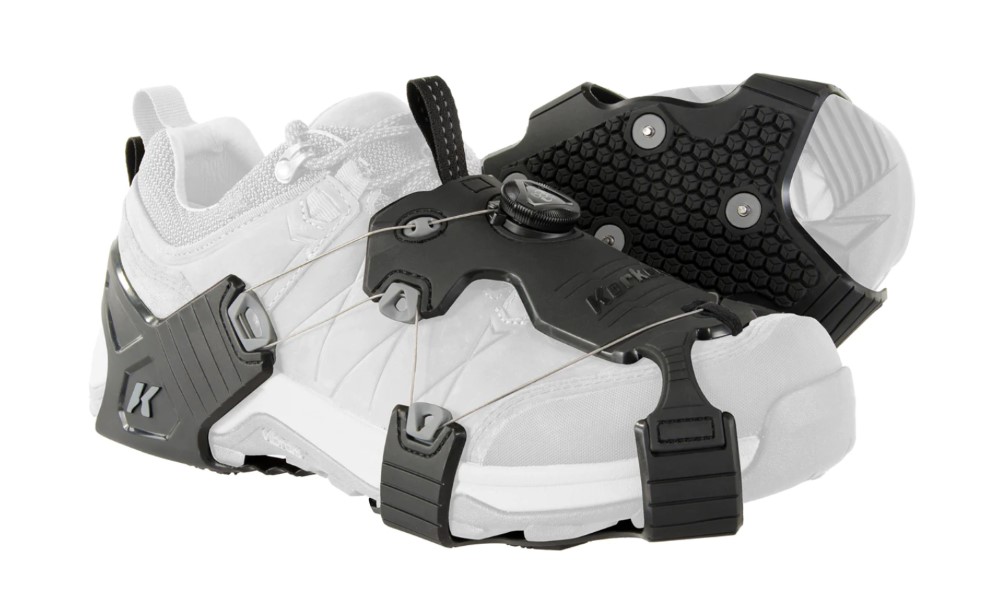
The Korkers Ice Walker ice shoes are made for winter walkers and runners. They build on Korkers’ history of making high-quality outdoor gear, like their fishing boots with removable soles.
There are 22 push-through diamond studs on these shoe ice grips that provide good grip. It’s important to note, though, that the carbide studs work great on icy areas but might not be the best choice for soft ground. The studs can be changed, which is a good thing because they can get worn down from running on rocks and roads.
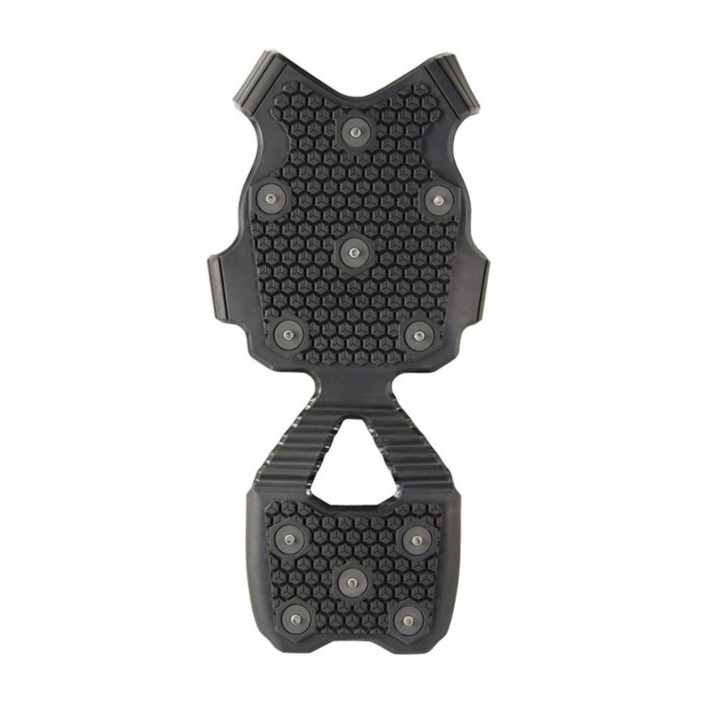
The BOA-FIT system on the Ice Walker is what makes it different from other ice cleats. It lets you get a perfect fit and make any necessary changes very quickly. The Ice Walker’s BOA system wraps around the shoe from all sides, covering the bottom and three-quarters of the top. Other types only have a Velcro strap or nothing at all across the top. It tightens, pulling the heel in and the top down. This makes the snow cleat feel like it’s a part of your shoe. As a result of this tight fit, you are much less likely to lose a cleat while running. Steel cables link the top and bottom of the cleats, making them stronger and safer.
Even though they are strong, these are the best ice boots if you want something light and simple. They are great for long, difficult winter runs. These shoe cleats are also very easy to pack.
- Korkers Ultra Runner
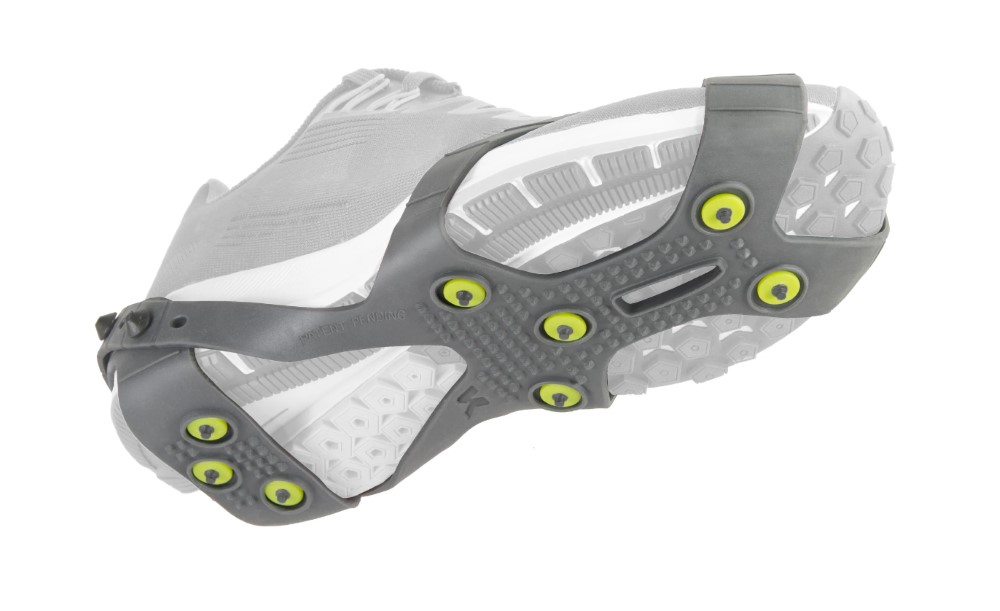
If the Korkers Ice Walker ice grips are too expensive, try the Ultra Runner. At 4.5 ounces per pair, these running shoe cleats may be the lightest on the market. They are great for winter runners who want speed and agility.
These cleats have 16 replaceable, ultra-durable carbide studs strategically placed for grip on icy roads and snowy trails. Instead of BOA, the Ultra Runner uses a patented, adjustable strap for a secure, bespoke fit on outdoor boots.
- Hillsound FlexStep
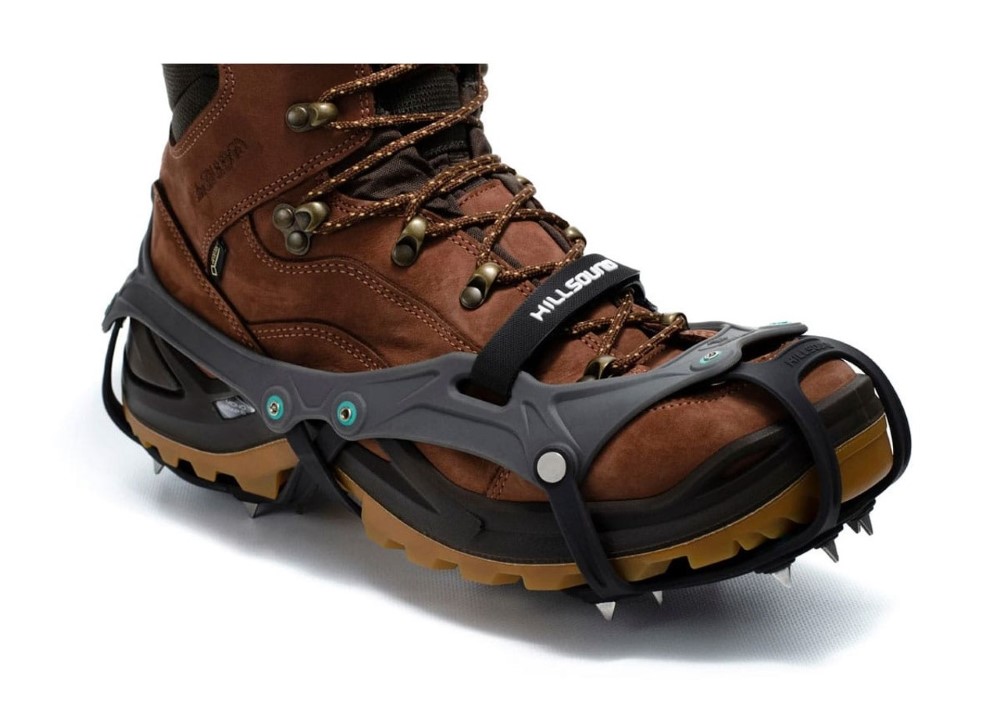
Our next pick is Hillsound cleats. Anyone looking for ice cleats for daily usage and light trekking might consider the FlexStep. This adaptability comes from several factors. Start with vigorous 0.25-inch spikes. Flexible spike plates with 18 stainless steel spikes give grip and mobility.
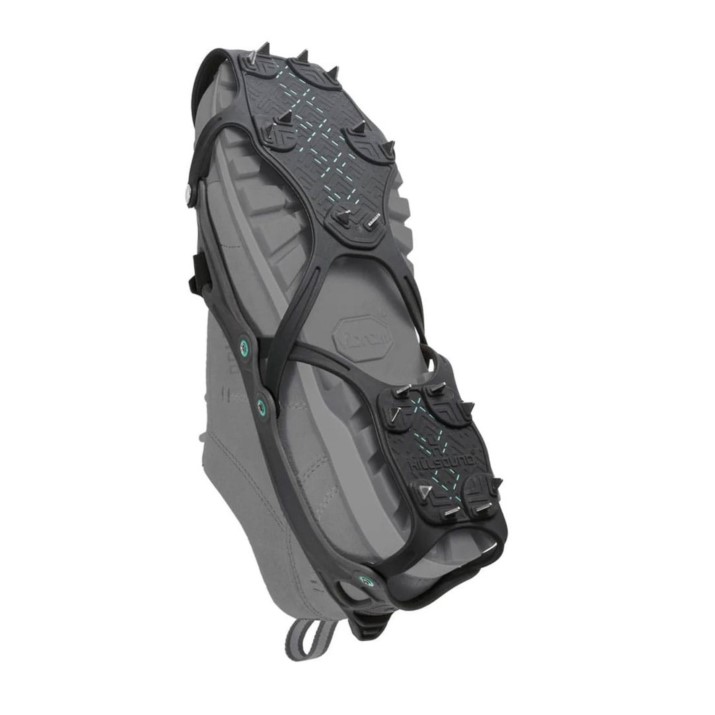
There are no bands or metal pieces on the toes. Even though these things make it harder to put on shoes, they do have one benefit. What happens is that the snow grips can get stuck in wet, heavy snow because the bottom of the FlexStep isn’t very open and the spikes aren’t very deep. This is why the FlexStep works best on packed snow and not so well on heavy, wet snow. For extra safety, the FlexStep shoe spikes come with a Velcro strap.
The FlexStep’s sleek design works with a wide range of shoes, such as casual shoes, trail runners, climbing shoes, and even insulated boots.
- Snowline Chainsen Light
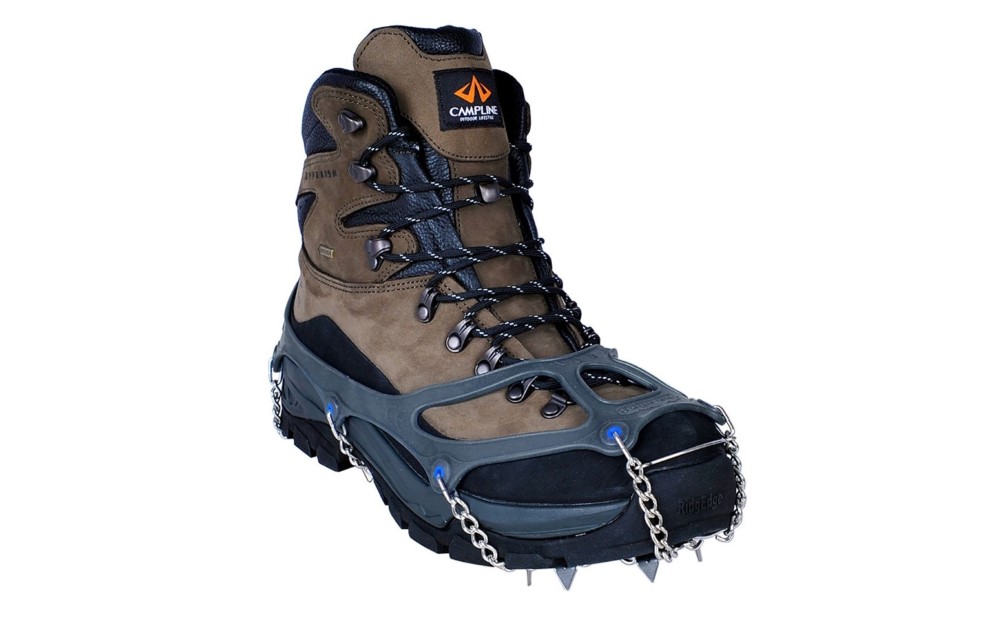
The lightweight and robust Snowline Chainsen Light snow spikes provide reliable traction on difficult snow fields and muddy trails. These cleats weigh 8.6 oz per pair and are 28% lighter than the MICROspikes, making them ideal for lightweight gear.
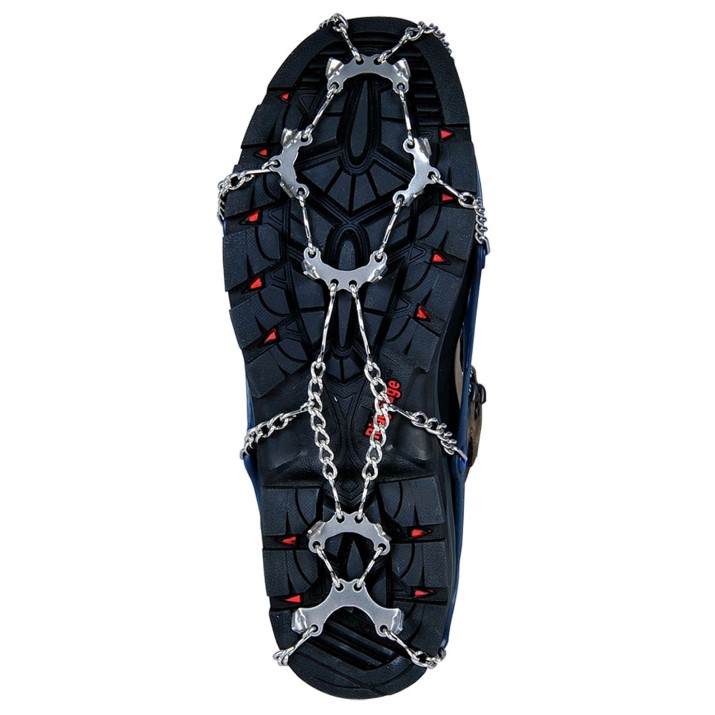
These cleats have 12 spikes per foot—8 forefoot and 4 heel. The spikes are composed of hardened 400-series stainless steel, which is corrosion-resistant and durable. A chain connects an independent spike group mechanism to prevent snow from gathering under your foot. Hardened stainless steel chains are welded for strength. The Chainsen Light is suited for hiking and daily winter walking, but not challenging terrain.
- Hillsound Trail Crampon
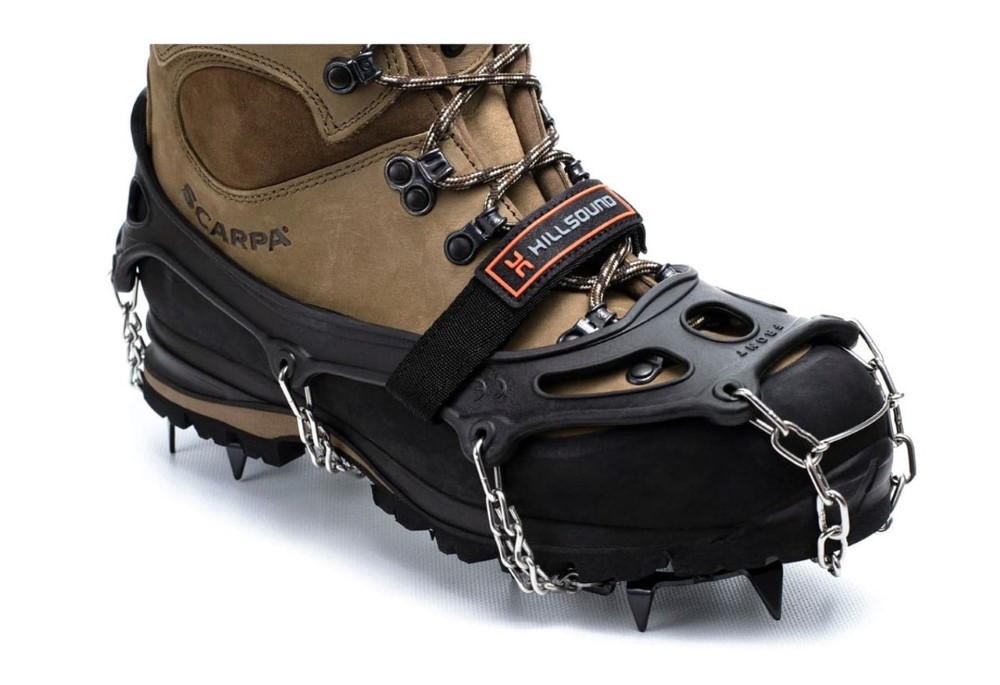
The Hillsound Trail Crampon is adaptable and trustworthy for snowy, slippery, or muddy hiking or backpacking. The model has 11 0.65-inch carbon steel spikes and an ergonomic plate system for weight distribution. This traction concept worked well on frozen lakes, snow-packed tracks, and dirt. The harness design inspires confidence—textured elastomer inside grips the shoe, and a Velcro strap across the foot secures the crampon.
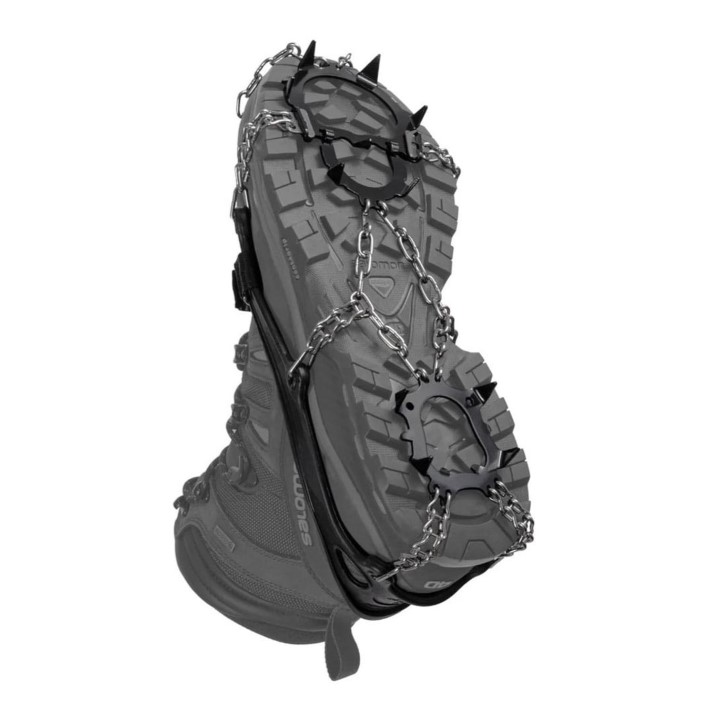
These ice grips can be worn with rigid-soled hiking shoes and boots and insulated winter boots for tough walks like descending a steep trail on an early spring backpacking trip and going up and down in late-season snow.
- Hillsound Trail Crampon Pro
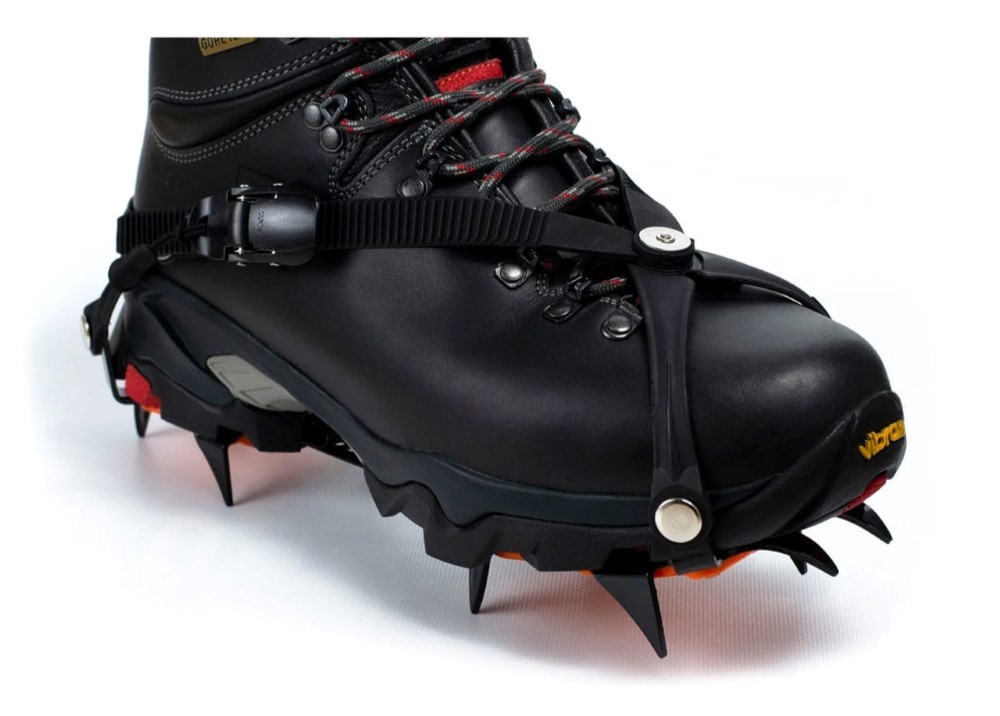
Lastly, the Hillsound Trail Crampon Pro are strong snow cleats for people who like to do rough winter backcountry activities like high-alpine hiking. They call these crampons the “top of the line” and describe them as a mix between regular crampons and microspikes. They have 10 ultra-deep (0.75-1 in) carbon steel spikes that can dig into thick ice and packed snow, and the ratchet buckle bindings are easy to change to fit over most boots. As an added bonus, this Hillsound has anti-balling pads that keep snow from adding up.
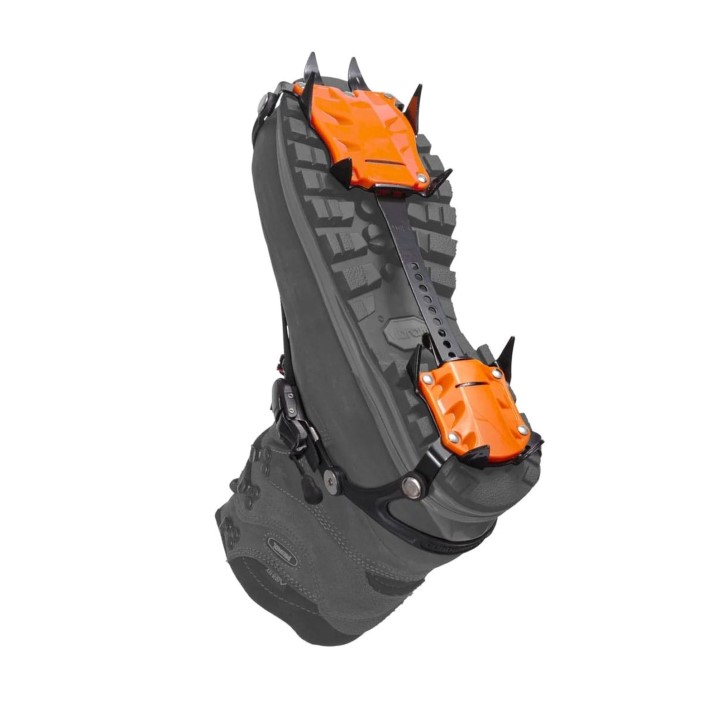
Trail Crampon Pro is ideal for winter hiking over ice sheets or treacherous boulder fields. It’s not designed for challenging vertical alpine activities or climbing boots.
FAQ’s
Q1. Do ice cleats really work?
Ice cleats do improve traction on slippery or snowy surfaces. Grips into the ice decrease slips and falls, making winter walking and hiking safer.
Q2. What is the difference between ice cleats and crampons?
Ice cleats and crampons provide greater traction on icy surfaces, although they serve different objectives. Lightweight, less forceful ice cleats are ideal for walking around town or light hiking. However, crampons are designed for tougher terrain like ice climbing and high-alpine trekking with larger spikes.
Q3. What should I look for when buying ice cleats?
Consider these things when buying ice cleats. Check spike quantity, placement, and length for traction. Traction improves with more spikes. Longer spikes mean the same; The ice cleats should fit snugly on your footwear without moving around. Make sure they are easy to put on and take off. Ensure durability with high-quality materials for prolonged ice cleat use.





